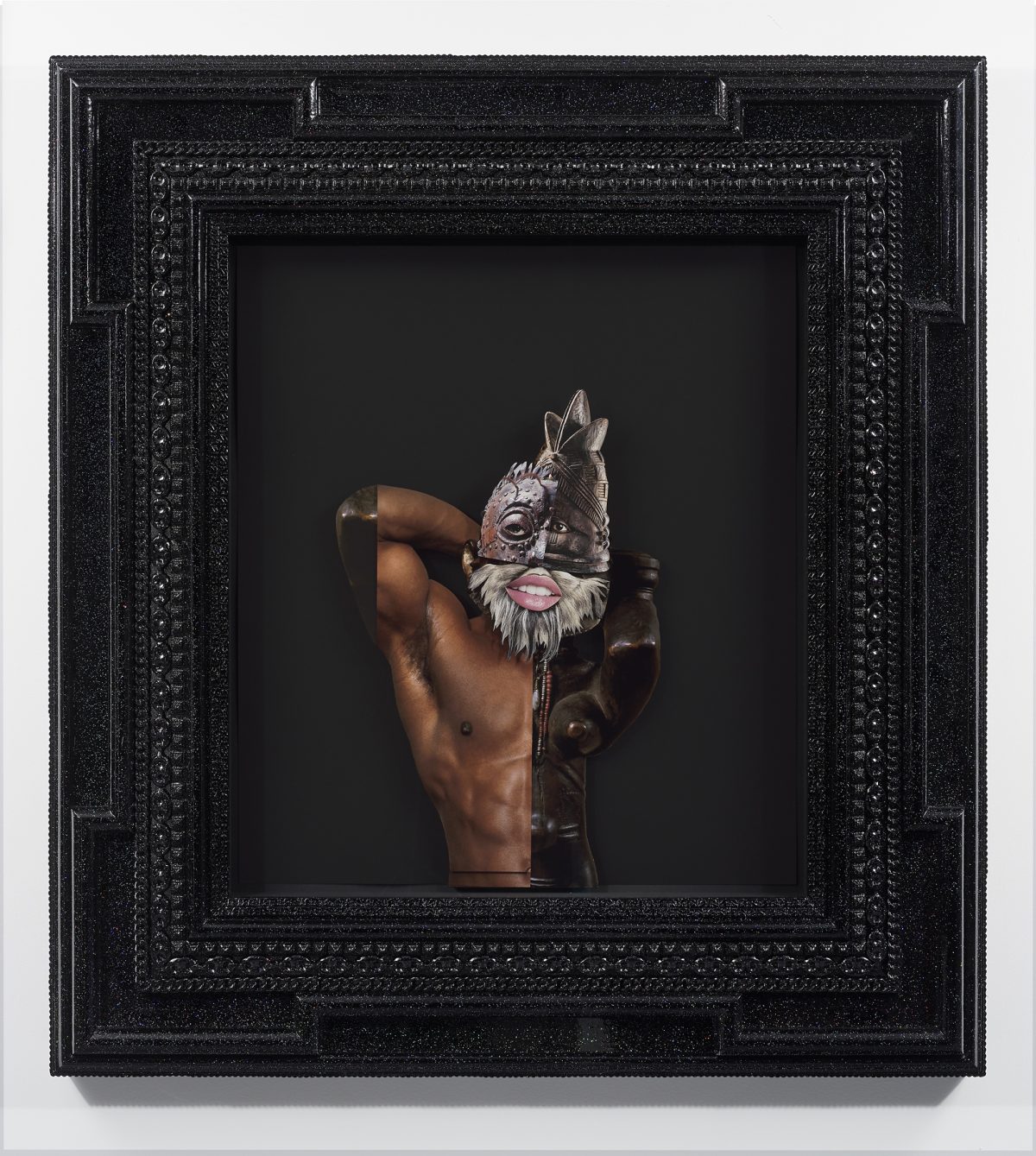
OAKLAND, Calif. — Mothership: Voyage Into Afrofuturism, a major new exhibition marking the reopening of the Oakland Museum of California (OMCA), has touched down right on time. In the works since 2019, the show, curated by Rhonda Pagnozzi with independent curator Essence Harden and 50-plus artists, historians, musicians, activists, and curators, adapted to both worldwide protests and the delay caused by global pandemic. Afrofuturism, an aesthetic that uses the arts, science, technology, and history to reimagine Black futures, first gained prominence in the 1970s, was coined as a term by scholars in the 1990s and is enjoying new popularity in mainstream media. OMCA’s exhibition pays homage to Afrofuturist pioneers, highlights Afrofuturism’s feminist and queer DNA, and showcases current global practice and applications.
Mothership has also landed in just the right place. OMCA sees itself as both community space and archive for Oakland, a historically Black city and incubator of Black culture and activism. Five years ago, the museum hosted a significant exhibition commemorating the 50th anniversary of the Black Panther Party, born in Oakland, and a selection of photos in this current exhibition celebrates the party’s community activities, demonstrating Harden’s claim that, “As a strategy, Afrofuturism fosters an infinite course of actions.” This rich history is undercut with urgency, as gentrification is displacing Oakland’s Black population at a staggering rate (nearly 25% in the past decade), a concern addressed in artist Alisha B. Wormley’s powerful recreation of her 2017 billboard that appeared in Pittsburgh’s East Liberty neighborhood and reminds visitors, There are Black people in the future.

Crowds called to board the Mothership enter a dark room, accompanied by composer Nicole Mitchell’s sound installation, “Mothership Calling,” and are soon introduced to the mother of Afrofuturism, sci-fi author Octavia E. Butler. The visionary Butler, whose novels, stories, and essays reenvisioned traditional gender identity and seem to have predicted recent racial, environmental, and political events, embodies Afrofuturism’s feminist and queer principles. Her notebooks, highlighted in colored marker and peppered with exclamation points, are equally prescient in their urgings to Get Popular! and Make People Feel Things!!! Another important mother included in the gallery titled “Dawn” (the exhibition is organized into four sections, two of which take their titles from Butler’s work) is Henrietta Lacks, whose illegally obtained cells are the source of the immortalized HeLa line that has been used to study cancer, cell biology, genetics, and infectious diseases, including COVID-19.

The next room, “Rebirth,” offers examples of assemblage, described by multidisciplinary artist Rashaad Newsome as “a method to construct a new cultural framework of power that does not find the oppression of others necessary.” A highlight is an entire wall designed by Newsome consisting of two collages created during lockdown, “Parenting While Black” and “Thirst Trap,” which piece together photographs of African masks and sculptures with male nudes to create seamless cyborg figures that reference Black and queer culture.
In “Sonic Freedom,” visitors have the opportunity to enter the Mothership itself, a replica of the flying-saucer prop that musician George Clinton used to make grand entrances at Parliament Funkadelic concerts in the 1970s and ’80s. Once inside, visitors can select from a playlist of 165 songs curated by DJ Spooky going all the way back to 1902. This bending of the space-time continuum extends with Space Is the Place, the 1970s Oakland-filmed movie starring avant-garde musician Sun Ra, projected on the wall behind an installation of Ruth E. Carter’s Dora Milaje costume for the women warriors in 2018 blockbuster movie Black Panther, set partially in Oakland.

“Earthseed,” the final room, highlights Oakland history and activism, providing influential Black Twitter hashtags and local resources. But some of the displayed material is not clearly connected to Afrofuturism and signals that the ship appears to have drifted a bit off-course. Though the boundaries of what constitutes Afrofuturism are porous, home movies and other historical ephemera feel beamed in from another exhibition.
It also would have been nice to see acknowledgment of related movements like AfroPunk and Africanfuturism, especially as a quote about Africanfuturism by Nigerian American author Nnedi Okorafor appears as wall text introducing the exhibition. Okorafor coined the term because Afrofuturism no longer fit, explaining that “Africanfuturism is specifically and more directly rooted in African culture, history, mythology and point-of-view as it then branches into the Black Diaspora, and it does not privilege or center the West.” Some of the most striking pieces in Mothership are in fact from African-born artists looking at Africa and demonstrate Africanfuturism’s focus on technology and indigenous cosmologies.

Nigerian-born visual artist and trained architect Olalekan Jeyifous offers a jaw-dropping, eco-futurist vision of mega-city Lagos, Africa’s largest metropolis, with “Shanty Mega-structures: Makoko Canal” (2015). His digitally created 3D visuals transposed onto digital photographs of the famous Makoko water community show fantastical skyscrapers patched together out of steel and wood, haphazardly spiraling into the sky and literally uplifting the poor. At first glance, “Passage” (2017), South Africa’s entry in the 57th Venice Biennial, looks historic. Soweto-born Mohau Modisakeng’s haunting, three-channel video meditation on indentured servitude and slavery places isolated figures, dressed in old-fashioned European and Basotho attire, in white rowboats that sink slowly into glistening black water. On second glance, the arched prows suggest rocket ships in deep space, while the rising water evokes climate change. The title “Passage” can reference both the transatlantic slave trade and the Setswana concept of life as passage. While diasporic artists traditionally look to Africa for inspiration, many African-born artists of the so-called Afropolitan generation split their time between Africa and the West. A second show could mine the rich territory of Afrofuturism and Africanfuturism in conversation.
Mothership: Voyage Into Afrofuturism continues at the Oakland Museum of California (1000 Oak Street, Oakland, Calif.) through February 27, 2022. The exhibition is curated by Rhonda Pagnozzi with independent curator Essence Harden.
0 Commentaires